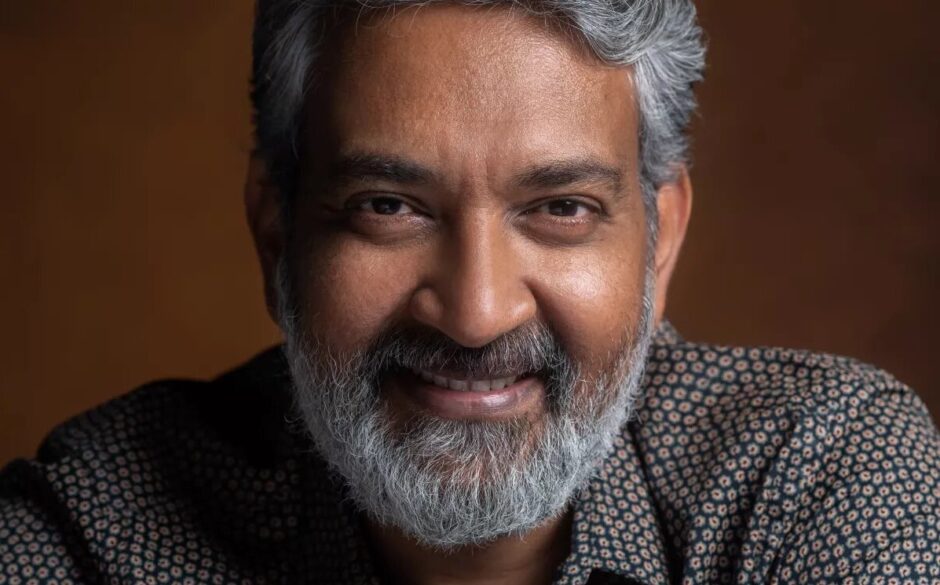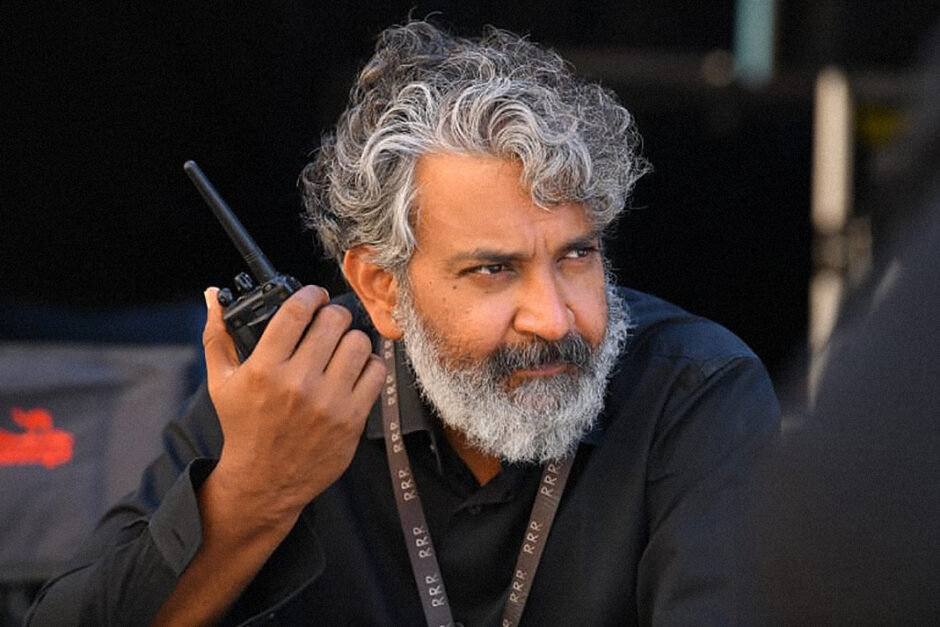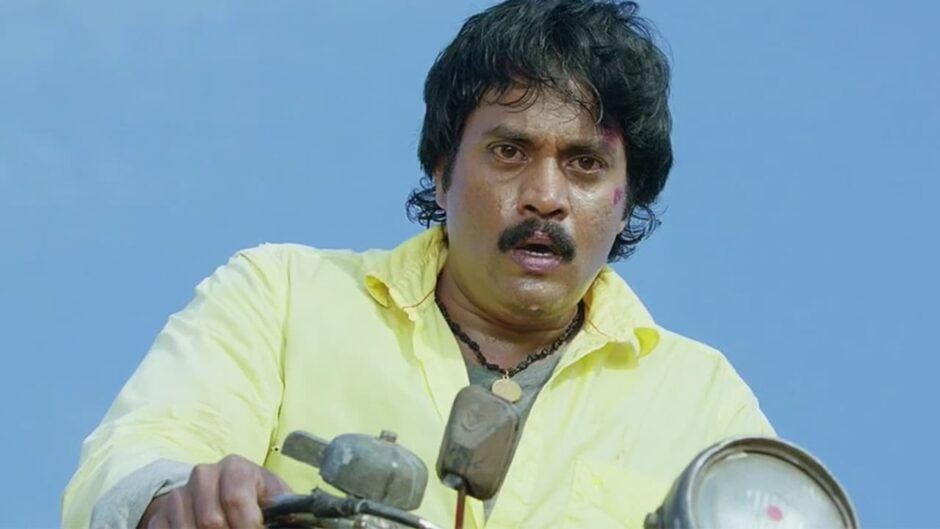retrospective
Maximalism and Mythmaking: The Epic Cinema of S.S. Rajamouli
“Any man’s finest hour is that moment when he has worked his heart out in a good cause and lies exhausted in the field of battle… victorious.” — Vince Lombardi, as quoted in Sye (2004, dir. S.S. Rajamouli)
One of the most pleasant surprises of my cinephilic journey so far has been discovering the films of Telugu Indian director S.S. Rajamouli. Rarely do I come across a filmmaker so committed to his vision of cinema—one without any pretensions for arthouse sensibility or genre deconstructions—and become completely entranced by it. Make no mistake, though: the 48-year-old director’s filmography is as artistically meritable as any popular name in world cinema.
Born to a family of professionals working in various fields of film production, Rajamouli had already been exposed to the silver screen at an early age. In particular, he has had a keen fascination with “larger-than-life” pictures and fantasy entertainment. This desire for large-scale productions also meant that Rajamouli would develop a very economic view of cinema, anticipating box office returns that would help him fund his subsequent film projects.
As such, Rajamouli’s films fall under the masala genre of the Indian film industry. The term “masala” refers to spice mixtures widely used as the foundation of flavors in Indian cuisine. Similarly, masala films incorporate various genres like romance, musical, action, fantasy, and comedy, among others, into one fascinating concoction of cinematic styles in order to appeal to as many audiences as possible. The masala genre is so popular that it has become synonymous with mainstream Indian cinema and is thus the style most compatible with Rajamouli’s artistic vision.

Photo courtesy of DVV Entertainment
Drawing inspiration from ‘50s American roadshow epics (specifically William Wyler’s Ben-Hur) and the Telugu films Missamma (1955) and Mayabazar (1957), Rajamouli understands that film, at its core, is a motion picture. His camera just never stops moving and is always directed at action, whether it be through quick cuts, musical montages, zoom-ins, or tracking shots. Oftentimes, he puts even greater emphasis on these moments with the use of slow-mo and bombastic visual effects, further enhancing their dynamic energy.
With a weaker director at the helm, this formal approach would be exhausting for the audience to follow. Rajamouli, however, is able to draw out mainstream Indian cinema’s inherent musicality and use it to find rhythm in his narratives. This is aided by the ubiquity of percussive and brass instruments as well as choral chant singing in his musical scores. Hence his films not only move; they also dance to the story beats and to Rajamouli’s directorial orchestration.
This maximalist yet orderly kineticism is justified by the epic scope of his films. Varied though his characters may be—with a wild collection of students, petty criminals, gangsters, gods, warriors, freedom fighters, a housefly, and even a sentient bicycle—he always presents them in a grand manner. His penchant for theatrics and over-the-top action sequences allows his stories to expand beyond imagination and proves the director’s immense command of the cinematic medium.
However, to call his films mere epic spectacles would be a disservice to their thematic depth. Rajamouli’s stylistic indulgence always serves a purpose—that is, to communicate in the most efficient manner the self-mythologizing narratives he is fond of telling. In a literary sense, myths are folkloric tales concerning a hero or an event, usually based on cultural or religious beliefs. Rajamouli applies this basic definition to his stories and redefines mythmaking as a process of crafting legends out of his chosen subjects in the most absurd and logic-defying ways possible.
Rajamouli is able to draw out mainstream Indian cinema’s inherent musicality and use it to find rhythm in his narratives.
To achieve this, Rajamouli first establishes his problematique—usually in the form of the antagonist or a tragic flashback—then proceeds to complicate that premise through themes of revenge, romance, and unfulfilled desires. The raw, primal emotionality usually associated with these motifs enables Rajamouli’s audiences to identify themselves in his stories and characters, and fuels the high-octane sequences that make them so exciting to watch.
Karmic fatalism is another staple of Rajamouli’s narratives. He does not hesitate to paint his protagonists and antagonists in a black-and-white dichotomy in order to contrast them with each other. For Rajamouli, it is important that the protagonist is fighting for an unquestionably good cause; motivations define his characters as much as their actions do. Though the feudal aspect of mythologies also extends to his male characters’ chauvinist attitudes towards women (that they are damsels in distress who need to be saved by strong, masculine men), the protagonists still remain mostly morally upright, always fighting for the greater good of the people.
This is not to say that Rajamouli’s films are devoid of any character progression. In fact, his protagonists always undergo a hero’s journey. But in true maximalist fashion, instead of starting off at a zero they begin at a hundred and go on to reach a thousand. Obstacles are but stepping stones for bigger achievements, while failures, if there are any, ignite a burning passion to reduce the enemy into ashes.
The almost caricaturesque depiction of good and evil also allows for a euphoric use of violence. There is a clear delineation between tyrannical violence and noble violence, where the latter is always necessary to trump the former. Though Rajamouli believes in the beauty of romance, he is not naive enough to suggest that love alone can end conflicts. Peace is always achieved through a violent struggle and bloodshed ensures prosperity for the future of the abused peoples.

Photo courtesy of DVV Entertainment / Media House Global
This worldview creates a paradox: the life-affirming feature of Rajamouli’s narratives is always tempered by the protagonists’ preparedness to put their lives at risk for an honorable cause. That death is always a possibility raises the stakes of his stories, but that none of his protagonists actually die (whether by tricking the god of death himself or transcending death through reincarnation) is also a literal testament to the films’ “larger-than-life” mantra.
Rajamouli’s cinema is, simply put, everything popular cinema can and should be. It inspires, entertains, and connects at the nuclear level, and shows that a commercial view of filmmaking should not necessarily be divorced from the artistic perspective.
Listed below are seven essential S.S. Rajamouli films for your enjoyment:
1. Sye (2004)
That this is both a gangster film and a sports drama is a contradiction in itself. There is nothing sportsman-like or honorable about gang violence, after all, but Rajamouli manages to put the two together. At the center of Sye is the MK College of Arts and Sciences, an institution infamous for the factionalism between its Arts (a.k.a. “Claws”) and Sciences (a.k.a. “Wings”) students. Aside from casual brawls, both groups regularly compete in rugby matches as an avenue for proving superiority against each other.
Things complicate with the arrival of the mafioso Bhikshu Yadav (Pradeep Rawat) who seizes the school property as his own. The two factions are forced to work together as “Eagles” and consequently show the collective power of the studentry against the powers that be. They conduct a character assassination against Yadav that eventually spoils his political career and use their knowledge to outsmart him on several occasions.
The film culminates in a 40-minute rugby match between the “Eagles” and the “Bulls” (Yadav’s gang) that is as intense as the war sequences in Rajamouli’s later features. Specifically highlighted is an incredibly rousing monologue by the Eagles’ coach Rafi (Rajiv Kanakala) which embodies Rajamouli’s principle of standing up against adversity no matter how indestructible it may seem.
2. Chatrapathi (2005)
Chatrapathi tells the story of a Sri Lankan immigrant named Sivaji (Prabhas) who gets separated from his stepmother Parvati (Bhanupriya) and brother Ashok (Shafi) after taking refuge in India. In order to survive, he works under the tyrannical Baji Rao (Narendra Jha) who runs an illegal port business. Twelve years later, Sivaji rises among the refugee community as the titular hero who fights for the freedom and dignity of oppressed people.

Despite the reputation that Sivaji had made for himself, his goal remains rather simple: to unite with his estranged family. His acts of heroism are but a detour to prove that he has grown up to be someone his mother could be proud of. The film presents motherly love as both a motivation and a complication, and although it loses steam by the second half, the pre-interval sequence remains Rajamouli’s most exhilarating.
3. Magadheera (2009)
Rajamouli’s breakthrough hit Magadheera is also his first film to include reincarnation. Lovers Kala Bairava (Ram Charan) and Mithravinda Devi (Kajal Aggarwal) are reborn 400 years into the future as Harsha and Indu, respectively, fueled by the strong desire to continue their romance cut short by the cunning Ranadev Billa (Dev Gill).
The film signaled Rajamouli’s foray into period pieces and even grander gestures of romance, now a centerpiece instead of a distant subplot. Though evidently limited by a vision that far exceeds his budget, Rajamouli’s fondness for extremities still shines through death-defying bike stunts, helicopter explosions, horse chase scenes, and some of the catchiest musical numbers under the director’s belt.
4. Maryada Ramanna (2010)
Forget everything I’ve said so far about Rajamouli’s style; Maryada Ramanna defies all of that. In what is perhaps the black sheep of his entire filmography, Rajamouli ridicules the excessive violence in his other features. The plot goes as follows: in 1982, a feud between two families resulted in the death of Ramineedu’s (Nagineedu) brother, prompting his entire clan to vow revenge whenever fate may permit. Twenty-eight years later, the orphan Ramu (Sunil) returns to his hometown in hopes of acquiring his share of land, unaware of the history between his family and Ramineedu’s.

What ensues is a cat-and-mouse game with pride, love, and tradition at stake. In lieu of an epic scope, Rajamouli goes all in on the humor, with an abundance of misunderstandings, absurd scenarios, and campy visual effects. Ramu may not be as strong and masculine as Rajamouli’s other leads, but what he lacks in physicality he makes up for with wit and a courageous heart, showing that strength can take on different forms.
5. Eega (2012)
The flower decorator Nani (Naveen Babu Ghanta) and his neighbor Bindhu (Samantha Ruth Prabhu) develop romantic affections for each other. Unbeknownst to both of them, however, the womanizing businessman Sudeep (Kichcha Sudeepa) has his eyes set on the beautiful Bindhu. Jealousy and violence intersect as Sudeep kills Nani in a fit of rage but not without the latter promising to exact his revenge, a desire carried over even after being reincarnated as a fly.
This premise makes Eega Rajamouli’s most ambitious work so far, where the epic scale is not so much dependent on the world but on the smallness of the main character. That a fly can be emotive and relatable is still a shock to me, but Rajamouli’s masterful play of sights, sounds, and CGI makes it possible.
6. Bāhubali (The Beginning, 2015; & The Conclusion, 2017)
Touted during the time of its release as India’s biggest motion picture, the two-part epic Bāhubali is the tale of the titular hero (Prabhas) who has an inexplicable desire to climb the waterfalls near his home village of the Amburi tribe. When he finally succeeds in doing so, he uncovers the truth about his dark past and how his uncle Bhallaaladeva (Rana Daggubati) had forcibly seized the throne of the Mahishmati Kingdom from his namesake father. Driven by anger and backed by an army of loyal supporters, Bāhubali storms his kingdom and reclaims his rightful title as its king.
The films follow quite a traditional, straightforward plot, but their combined budget of $70 million would enable Rajamouli to create his most intricate epic yet, with world-building comparable only to the likes of the Lord of the Rings or Harry Potter franchises. The duology would go on to earn $350 million globally, a feat yet to be surpassed by any other Indian film.
7. RRR (2022)
In 2014, India’s then-President Pranab Mukherjee enacted a law dividing the region of Andhra Pradesh into the states of Telangana and Andhra Pradesh. Rajamouli, who was born and raised in that region, questioned the rationale for the separation when both areas share the same language, history, and culture. This prompted the story idea for RRR, a historical fiction film about real-life freedom fighters Bheem (N. T. Rama Rao Jr., otherwise known as Jr NTR) and Raju (Ram Charan) and their ensuing friendship amidst the British occupation of India.

RRR is laden with dialectical metaphors. There are colonizers and colonized people, a hunter and a tiger, water and fire, city and jungle, and all other sorts of contradictory forces. For the first half or so of the film, it leads us into thinking that Bheem and Raju are also part of this polarity. Despite their brotherly bond, they serve opposing groups—the Gond tribe and the British colonial army, respectively—whose ideals are incompatible with each other.
What was initially presented as oppositional is later uncovered as complementary with the revelation of Raju’s backstory. RRR invites the Indian populace (and by extension, its global audience as well) to probe what unites them and focus their energy on fighting common enemies grounded on universal tenets of justice and righteousness.
Curated by humans, not algorithms.
© 2025 A Good Movie to Watch. Altona Studio, LLC, all rights reserved.